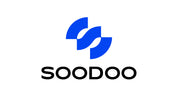When selecting a paddle board, it is helpful to go beyond just the dimensions and outline shape of a board.
Stringer - the term comes from hard boards. Stringers are used to stiffen a surfboard blank for shaping purposes In the case of inflatable boards, this stringer is not made of wood, but of dense PVC or other special elastic fibre. Nowadays many brands and companies refer this as "drop stitch" technology. 
Rail - the side edges of the board from nose to tail.
Nose - the head/tip of the paddle board. The shape of the nose determines the speed and ability to travel in water. The nose also affects stability: the rounder it is, the larger the area the board has in contact with water and the more stable it is.
Rocker - the bending angle / tilt of the board when viewed from side. The larger the rocker, the better the board behaves on waves. An upturned nose does not allow the sup board to burrow into the water during the passage of sharp waves. The higher the tail is lifted, the more sensitive the board is to the rider's direction and the easier to turn around. As the nose rises, so is the rocker, board will stability decrease, but maneuverability will improve.
Tail - the end of the board. A square tail provides stability, a round tail gives more room for maneuvers, and a pointed tail adds speed and stability on the course.
Fins - they prevent the board from spinning in a circle and keep it on course. Fins can be glued in, slide in or screwed in, there are many types of installation. They can be replaced with new ones, as well as replaced with ones suitable for the selected riding conditions or the needs of the rider. Nowadays, in comparison with glued-in fins, replaceable fins are much more popular. Some boards have only one big centre fin, while others have one big central fin in the middle and two small side fins.

